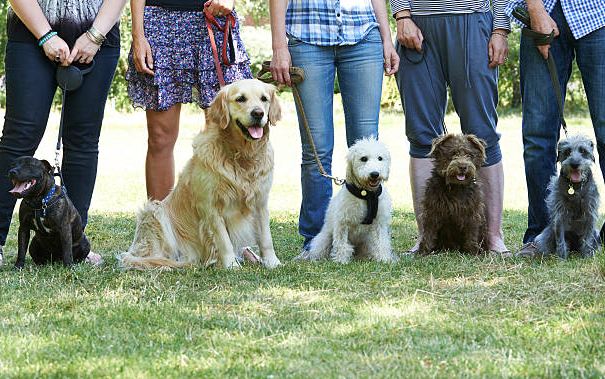Dog training is the process of teaching a dog to exhibit certain desired dog behavior in specific circumstances.
Training your dog should absolutely be a top priority. Fundamentally, dog training and dog behavior are about communication.
The goal of dog training is to build a bond between pet and family and to enjoy the process. Dog training should ALWAYS be fun for your dog, so if you or your dog begin to get tired take a break and come back to it later.
Obedience, herding, agility, tracking, retrieving, hunting, guard, and schutzhund are common areas of dog training.
Training social skills is a continuous process. Training starts the moment your pup comes home. Waiting until the puppy is older and has already learned undesirable habits makes the training much more challenging.
All dog training must be founded upon educating the dog, which is, developing instincts and drawing out accidental and acquired habits.
Bribery can also be a great dog training method. In dog training, the term “bribery” means that the dog is aware of the presence of the reward before he is asked to complete the command.
Don’t be disheartened if it seems you are not getting anywhere with your dog training, because it generally takes us longer to learn how to train our dogs than it does for our dogs to be trained.
The hardest part of training is communicating with the dog in a humane way that he understands.
The emotional state of the dog is an important consideration in directing the training, as a dog that is stressed or distracted will not learn efficiently.
Failure to reward after the reward marker diminishes the value of the reward marker and makes training more difficult.
Most training revolves around giving the dog consequences for his behavior, in the hope of influencing the behavior the dog will exhibit in the future.
Most modern trainers say that they use “positive training methods“, which is a different meaning of the word “positive” from that in operant conditioning.
Positive training methods” generally means preferring the use of reward-based training to increase good behavior to that of physical punishment to decrease bad behavior.
The goal is to produce a dog that will perform even on occasions that the handler has no reward to offer since the dog’s training has taught him that the handler may have a reward even if the dog cannot see it.
Electronic dog training collars are useful tools that do no harm your pet. As is often the case, these dog training shock collars can be used for various training regimens, including but not limited to, hunting exercises, agility training, pet containment, anti-barking, and more.
Although shock collars are not dangerous to dogs, you should always use prudent judgment in implementing any dog-training program.
There is a considerable portion of dog training, which is actually thinly disguised abuse. Although dog training can be hard at times, its important that you remember to keep things positive for you and your dog at all times.

